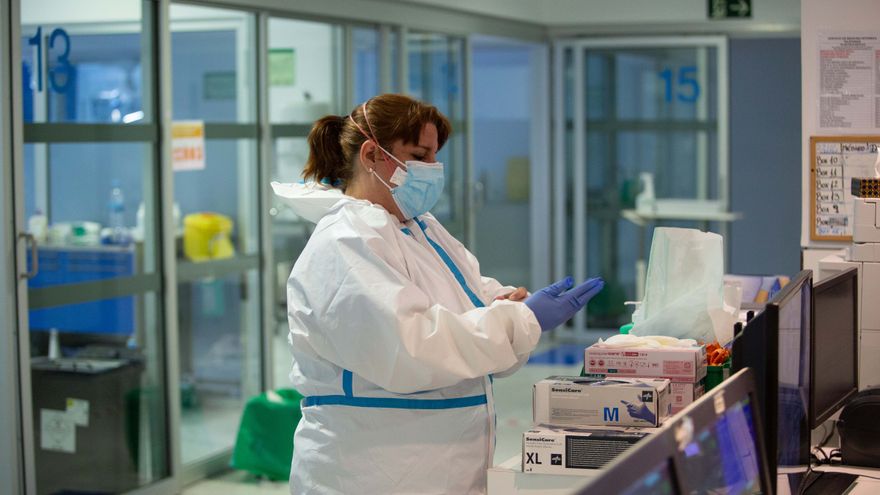A ‘superspreader’ in the proliferation of the virus is a person with a greater capacity to transmit a virus that causes infectious diseases.
In all epidemics there are different patterns of transmission, and one of these is the ‘superspreader’.
Those most likely to be ‘superspreaders’ of the virus, causing up to 80% of cases by exhaling more infected particles than the rest of the population are:
- People with obesity
- People linked to older age
- People with covid-19 infection
These three aspects are related to the propensity to exhale more respiratory droplets, which are the main spreaders of SARS-CoV-2. Specifically, those who exhale more of these particles are older people, those with a higher body mass index and those with increasing levels of covid-19 infection, who exhale up to three times more aerosols than others.
Aerosols
Eighteen per cent of people account for 80 per cent of exhaled particles, reflecting an aerosol distribution that follows the 20/80 rule already observed in other infectious disease epidemics. In short: 20 per cent of infected individuals are responsible for 80 per cent of transmissions. These are the so-called ‘superspreaders’.
Although study results show that young and healthy people tend to generate far fewer droplets than older and less healthy people, they also show that any one of us, once infected with covid-19, can run the risk of producing a large number of respiratory droplets, thus becoming a ‘superspreadert’.
Some examples are that in early March, a single person infected 52 others during a choir rehearsal in the state of Washington in the United States. Or in Spain there are also documented cases in which a few individuals have been able to infect a large number of people.
In each of these cases, it would be people who for some unknown reason would have been carriers of a high viral load and either were in the early stages of infection, before showing symptoms, or would have passed the disease asymptomatically. In any case, beyond these hypotheses, the fact is that at present it is not known what characteristics, if any, contribute to a person’s ability to transmit the virus.
As previously stated, it is estimated that in the case of SARS-Cov-2, 20% of those infected could be contributing to 80% of infections, and there is even talk that this ratio could be as high as 10-90. But for this massive contagion to occur, it is not enough to carry a high viral load, you also have to be in the right place at the right time.
These are amplifying factors that greatly increase the likelihood of transmission:
- Closed environments
- Large number of people gathered
- Continuous contact
We have many examples of super-scatter events. In the agri-food and meat processing industry there is a high risk of outbreaks because people work in close contact in a closed environment where it is cold, noisy, (more shouting) and that is the perfect breeding ground. So are bars and restaurants where there is sometimes loud talking or shouting, due to excessive alcohol consumption.
There is a mixture of both situations: events and people. Behind these transmission patterns lies the figure of the ‘super-scatterer’. You can mix the two, both ‘superspreaders’ and large contagion events. We cannot separate out exactly how many of these cases are the result of transmission from a single person or from several people.
We know that about 40% of the population that has passed covid-19 has done so asymptomatically, so many of these ‘superspreaders’ could not and cannot know that they are transmitting it. That is why I think it is better to avoid the term ‘superspreader’ and rather, talk about superdispersion events where all the conditions that amplify the chances of mass transmission are present. Obviously there is a person-dependent factor, not everyone transmits the virus, but this capacity is greatly amplified depending on the type of activities carried out.
We are facing the most devastating pandemic of the 21st century. Every day there are new publications and data, but everything is moving very fast and is passed on to society almost unfiltered, generating an avalanche of information overload on the public that can be confusing. The figure of the ‘superspreader’ can generate stigma.
On a scientific level, from a practical point of view, we can think that there is no great difference between super-scattering events or super-scatterers, after all, it is a super-contagion. But it is very important to know what the mode of transmission is, to know what the molecular mechanisms are that underlie a supertransmitter. If we know that, it will be a very interesting breakthrough that will help us fight the virus. What should be clear to the public is that any one of us could be a ‘superspreader’.
Potentially everyone can transmit, which is why it is so important to keep your distance, use protective measures and avoid as much as possible events where all the circumstances that could trigger mass infection are present. Even though this all started a year ago, it is important to continue to do so.

